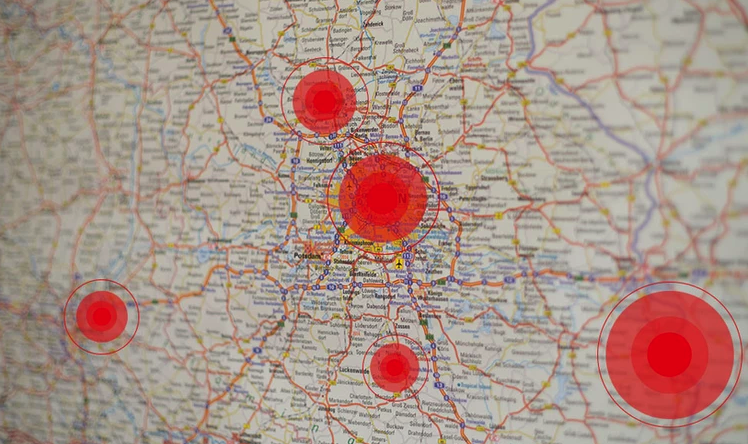
As the Economy Reopens, Proximity Targeting Can Fill the Advertising Gap
Retail and physical store brands are still recovering from COVID-19. As one of the hardest hit sectors for having to manage a physical space during the pandemic,adapting to the new realities is a must. Consumers are not traveling much less and are staying within smaller geographical parameters. While OOH ads may no longer be as effective, location may be a more accurate way of tracking current and potential customers.
Geo-targeting, otherwise known as local PPC, refers to the practice of delivering different content or advertisements to consumers based on their geographic locations. In paid search campaigns, geo-targeting is often used to advertise to local prospects.
What is Proximity Targeting?
Proximity Targeting is a marketing technique that uses mobile location services to reach consumers in real-time when they are around a store location or point of interest. Using proximity targeting, you can target a defined radius or custom polygon around a list of physical locations such as stores, competitors, or key points of interest.
If a consumer has opted into location services on their mobile phone and enters within this radius, proximity targeting triggers an advertisement or message to that consumers in an effort to influence their behavior. For example, a grocery store may want to target consumers within a 1 mile radius. Proximity targeting around around the store would trigger an advertisement when consumers walk into that radius.
Proximity targeting is much more precise than location-based targeting because it relies on technologies like beacons, WiFi and Near Field Communication (NFC) that can detect when a device is within a building. Geofencing for location-based marketing is used when it is required to target the consumers in a larger geographical spread. The interaction between the customers happens within a specific range by using the data (latitude and longitude) provided by the GPS devices on a customer’s mobile phone. As soon as the consumer enters within a pre-marked geographical area, they are sent a relevant mobile ad by the brand. This virtual marking of a region is known as “geo-fencing“ but cannot determine with precision when a mobile device is in-store.
What are the Capabilities of Proximity Targeting?
If foot traffic is a KPI, proximity targeting can offer a strong attribution of ROI since it is possible to measure visits that happen after an ad is served.

Geo-Conquesting
Burger King did a great “Whopper Detour” campaign in 2018 that utilized proximity targeting capabilities in the form of Geo-Conquesting (serving ads in proximity to competitor locations). The fast food giant used mobile geofencing to steer customers away from McDonald’s and promote the order-ahead features of Burger King’s recently redesigned app. People who went within 600 feet of most McDonald’s locations were delivered a mobile notification offering a Whopper for one cent. After they placed an order, the app directed them away from McDonald’s and toward the nearest Burger King outlet to retrieve their food. “Whopper Detour” drove more than 1 million app downloads within just a few days of the campaign’s launch, later drumming up 1.5 million downloads.
Geographic Lookalike Audiences
Lookalike Audience Targeting is a way to reach people who are likely to be interested in your business based on similarities to an existing audience.
Proximity targeting can create lookalike audiences in residential areas around a device that has been confirmed to visit a participating retailer. By identifying a device that visits a store, it is possible to then match that device to a residential location, and then target the neighborhood. This is especially useful in places where there is significant distance between commercial and residential areas, allowing advertisers to pinpoint which neighborhoods are served by which retail locations.

To learn more about the latest trends in advertising, download free eBook: Return to Market: Trends & Tactics for the New Normal .